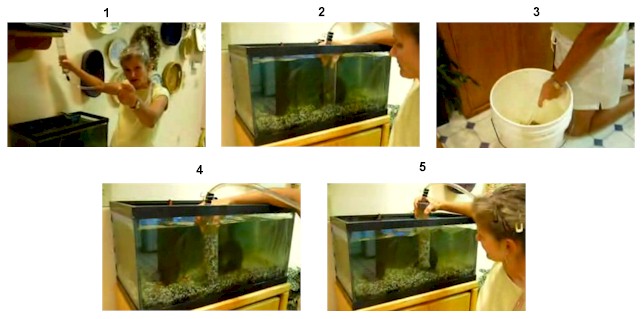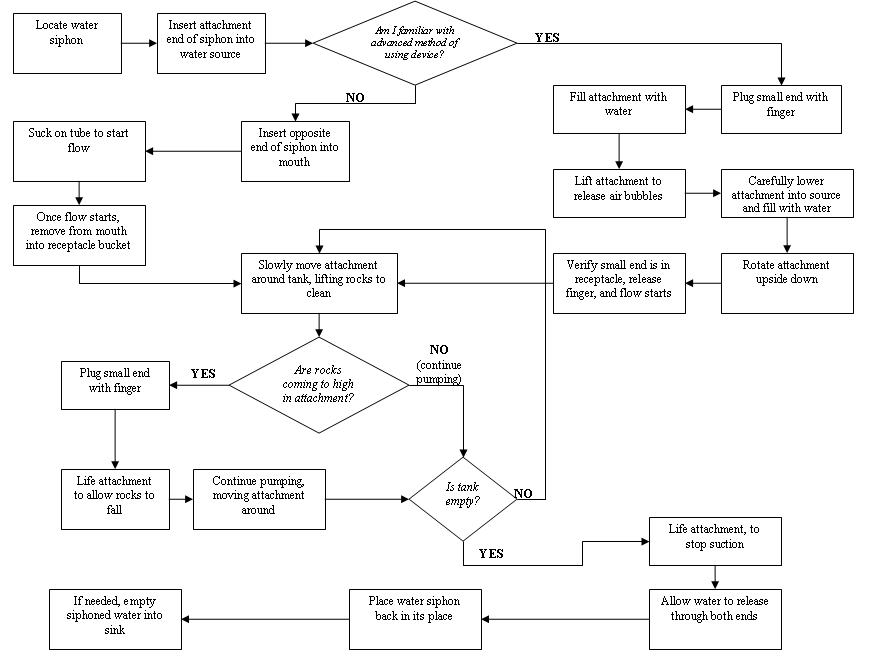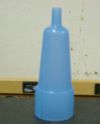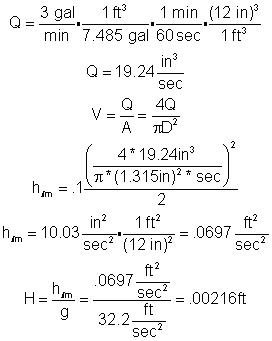Siphon
From DDL Wiki
This product is a component of the analysis for the aquarium pump project.
Contents |
Product Purpose
Like all siphons (which provide a means for draining liquids from higher elevations to lower elevations), the purpose of an aquarium siphon is to transfer water from a fish tank to a bucket located at a lower elevation. In addition, the siphon attachment allows the aquarium rocks to become dislodged in the turbulent flow created within the attachment tube, which cleans off the algae from the rocks before returning them to the bottom of the aquarium. Although a user can employ the siphon merely to remove water from an aquarium (without cleaning the rocks), the function of the cleaning attachment necessitates that a portion of the tank water be removed when cleaning the aquarium rocks. However, the two functions of the aquarium siphon are often employed simultaneously. Additionally, the general siphon functionality of this product allows it to be used in a range of applications in which a user would like to transfer liquid without lifting. Possible alternative uses include emptying a clogged sink (or small pool), draining a water bed (or hot tub), or transferring fuel.
Customer Needs
The principal user needs to a water siphon (as used in original design context) are as follows:
- Ability to create and maintain a siphon
- Performance reliability (i.e., ability to avoid clogging)
- Compact shape
- Durability
- Low cost
- Ability to pick up rocks for cleaning in attachment (but not allow them to enter the siphon tube)
Stakeholders
As entities (either individuals, businesses, or groups) that have some degree of dependency on the product, the following entities are possible stakeholders for the siphon:
- Users
- Designers, engineering, managers, and other employees at company where product is made
- Suppliers of raw materials
- Aquarium stores
Consumer Demographics
The primary users of this device are individuals who own aquariums. Secondary users include anyone wishing to transfer an amount of liquid that would be difficult to transfer by buckets. Some examples include emptying a clogged sink or small pool or transferring gas or fuel.
Product Function
To use this device, one must place the attachment in the tank and then create a siphon so that water flows out of the tank into a receptacle. Novices can create a siphon merely by sucking on the smaller end of the tube and waiting for water to begin flowing. This method can be difficult and has the obvious disadvantage of the user coming in contact with the water in the tank. An advanced technique can be employed when the user scoops up some of the fish tank water into the attachment end of the tube and then proceeds to raise that end (so that it is much higher than the opposite end) while simultaneously plugging that same end with a finger [1]. Next, the user waits until all of the air bubbles in the tube have ascended and have released out of the tube until proceeding. Once the air bubbles have released, the user is ready to start a siphon. The user carefully places the attachment end into the tank, fills the remainder with water, and then flips it upside down so that the open end is at the bottom of the tank or mixed in with the aquarium rocks [2]. At this point, the tube should be completely filled with water. When the user is ready, he or she can release the finger (which is on the opposite end of the siphon), and water should begin moving out of the tank into the receptacle [3]. The user keeps one hand on the tube by the receptacle and the opposite hand on the attachment end, which is in the tank. To clean the tank effectively, the user can move this attachment around the rocks, which dislodges the pebbles [4]. Every so often, the rocks will be siphoned up the attachment and could potentially clog the device. At this point, the user must plug the small end of the tube with their finger and raise the attachment out of the rocks so they will fall back down [5]. To start the suction, the user releases the finger plug and can proceed to clean the tank. The user can then repeat this process until they are satisfied with the amount of water removal from the tank. To stop the siphon, the user simply raises the attachment out of the water, which stops the suction. Both the novice and advanced method are difficult, as the siphon may potentially be lost at any time and would require restarting the process.
Physics
The operation of a siphon is governed by physical laws, most specifically those in the domain of fluid mechanics. All siphons are some form of continuous tube that allow a source body of liquid to be drained into a reservoir at a lower altitude than the liquid surface of the source. In order for the liquid to pass through a transitional point of a higher altitude than the liquid source, the flow must be driven by hydrostatic pressure. The siphon functions owing to the fact that the liquid flow near the drainage point creates a partial vacuum inside of the tube to draw the liquid from the original source. Since atmospheric pressure is needed to sustain the cohesion of the liquid, the maximum height of the crest is limited by both the atmospheric pressure and the liquid density. If the working fluid is water under atmospheric conditions, the maximum siphon height is about 33 feet.
Product Use
In order to demonstrate the use and workings of the siphon, our group made the following video:
- Water Siphon Demonstration: This video shows a siphon user who has perfected the advanced method of siphon operation (described above) in order to clean rocks and empty dirty water from an aquarium.
Beyond the use of the siphon, cleaning and storage are also significant aspects of the product's design. The siphon is likely to exhibit residue buildup due to the fact that it is often used to move polluted fluids that are likely to leave small residues on the inside of the product. Owing to the small diameter of the plastic tube, it would be difficult to clean the product by wiping off the inside. Thus, running water through the tube would be the only feasible method of cleaning. Furthermore, the standard tubing size used for the device allows one to discard a tube with considerable buildup and simply buy additional lengths of tubing. However, this procedure would likely lead to shorter product lifetimes and would carry with it larger environmental impacts (associated with the disposal of the old tubing and the manufacturing and transportation of the new plastic tubing). While cleaning the inside of the tubing may be problematic, the smooth plastic surface material of the attachment and corverger allows one to wipe off the product will minimal effort.
In terms of storage, this device's detachable components facilitate easier storage in a drawer, toolbox, cabinet, or space near an aquarium. Also, the flexible tube may be coiled to reduce storage needs.
Bill of Materials
Failure Mode and Effects Analysis (FMEA)
The table below details our assessment of the most common failures that we anticipate the bilge pump to experience. This assessment explains how product parts may fail and what the consequences, detectability, and probability of occurence those failures implicate. Addressing these possibilities will allows future designs of this product to be more reliable. Using the Suggested Evaluation Criteria (as found on the FMEA wiki page), we were able to rank the severity from 1-10 (10 being the highest). For the occurrence parameter, we then were able to rank the probability of failure again from 1-10 (with 10 being the highest). Finally, we were able to rank detectability from 1-10 (with 1 being the most detectable). From these three numbers, we were able to multiply them together, which results with the Risk Priority Number (RPN).
| Item and Function | Failure Mode | Effects of Failure | S | Causes of Failure | O | Design Controls | D | RPN | Recommended Actions | Responsibility | Actions Taken | S* | O* | D* | RPN* |
|---|---|---|---|---|---|---|---|---|---|---|---|---|---|---|---|
Siphon Attachment Converger
| Blockage | Erratic operation; fluid movement impinged | 7 | Sediment buildup; insufficient room for large objects (e.g., aquarium stones); fish or marine life impingement | 6 | Siphon flows with suspensions of large objects of varying geometries | 3 | 126 | Allow greater curvature in converger design; creating brush to facilitate cleaning | Design engineer | - | - | - | - | - |
Attachment
| Cracking or fracture | Rocks may exit attachment and would not be cleaned properly | 6 | Overstressing; applying large forces to plastic outside of normal use | 3 | Test material strength under high loads | 3 | 54 | Improve material strength tests; use more durable plastic | Materials engineer | - | - | - | - | - |
Tube
| Deterioration or melting | Pump will lose efficiency | 6 | Siphoning corrosive substances or hot liquids; exposure to excessive heat | 4 | Test under extreme temperature conditions with range of substances | 4 | 80 | Use material with greater resistance to high temperatures | Materials engineer | - | - | - | - | - |
| Deformation | Tube may not connect to converger properly or may become dislodged during use | 6 | Excessive use causes tube diameter stretching | 3 | Subject tube to repeated tests with larger diameter | 2 | 36 | Use material that better permits repeated wear without deformation | Materials engineer | - | - | - | - | - | |
| Wear | Hole or rip | 7 | Overuse; contact with sharp edges (e.g., tank) | 5 | Test material under extreme use conditions | 3 | 105 | Use more durable material in tube construction | Materials engineer | - | - | - | - | - |
The highest RPN value for this analysis was 126, which would be caused by blockage. This mode of failure would lead to erratic operation or the impingement of fluid movement. This failure received a 7 for severity, a 6 for probability of occurrence, and a 3 for detectability. The result of this failure would be the siphon operating inefficiently but perhaps would lead to a complete loss of functionality. From this analysis, it can be concluded that even the most catastrophic failure is not detrimental to the user with respect to his or her physical safety and wellbeing. The worst case scenario is that the siphon would lose its functionality, causing the user to have to purchase another siphon. To fix this failure mode, a possible solution would be to allow greater curvature in the converger design or to create a brush to facilitate cleaning. This example illustrates the fact that the FMEA analysis diagnoses some room for improvement in the overall design of the siphon.
Design for X (DFX)
The concept of DFX refers to considering a specific variable X in the design of a product. Some common variables that are considered are ease of: manufacturing, assembly, use, and maintainability.
Design for Manufacturing and Assembly (DFMA)
DFM and DFA refer to analysis and design strategies that aim to understand how a product is made and how the manufacturing and assembly steps in its production can be improved. The DFMA process is advantageous for a designer's consideration due to the tremendous cost benefits that accompany the simultaneous analysis of DFM and DFA and the interface between the two methods. The use of these methodological tools can reduce costs, decrease labor, cut production times, decrease part counts, and improve the overall design quality.
Design for Manufacturing (DFM)
The primary goal of the DFM process is to analyze the manner in which the component parts of a product are made. By examining how things are manufactured, this process can be optimized so that parts can be produced efficiently and economically while adhering to design constraints. In order to optimize a manufacturing process, cost factors must be taken into account along with time, labor, environmental, and quality concerns. The list below details some of the ways in which DFM was likely incorporated into the design of the siphon:
- Tube and attachment are both extruded, which allows for less wasted plastic and ultimately greater efficiency and lower cost in mass production
- Tolerance between siphon attachment converger and tube is loose enough to allow small expansions of plastic tubing for tight fit in assembly, which prevents parts from being discarded owing to fitting problems
- Product contains no materials that are difficult or expensive to manipulate in manufacturing process (e.g., rubber, glass, metal)
The analysis above suggests that the product has been designed well for manufacturing. Despite its simplicity, the siphon design manages to reduce manufacturing costs through its choice of materials yet retains a high degree of durability.
Design for Assembly (DFA)
The objective of DFA is to improve product quality and reduce costs by optimizing a product's design and assembly process. DFA goals are predominantly achieved through simplifying a product, reducing part counts, and designing components that can be easily managed and installed. The follow list describes how DFA was probably applied to the design of the siphon:
- Product design uses sleeve fitting instead of fasteners to reduce part count, thereby decreasing cost and complexity
- All components are axisymmetric about radial axis and have enough friction to facilitate handling and manipulation
- Parts are not too big or heavy due to light plastics used in design, which makes handling easier
- Stackable nature of siphon attachment converger reduces storage space through compact design
- Simple and clear product design (with terminals that can only be connected with correct parts) facilitates assembly
From the aforementioned analysis, it is evident that great care has been taken to optimize the assembly process for the siphon. Owing to the straightforward nature of the product design, the design for assembly of the siphon is nearly optimal, as it avoids superfluous complexities and allows for easy handling.
Design for Environment (DFE)
Design for the environment refers to the concept of considering the effect that a product will have on the environment. The entire life cycle of the product should be considered. This includes the manufacturing of the product, the transportation of the product, the use of the product, and end of life.
Economic Input-Output Life Cycle Assessment (EIO-LCA)
One way to assess the effects that a product has on the environment is a process called EIO-LCA. This analysis takes into consideration each sector of the economy affected by manufacturing and distributing the product of interest. The economic activity, energy usage, and greenhouse gas emissions related to manufacturing and distribution of the product for each sector is calculated by the EIO-LCA software.
For the siphon, the sector of "Plastics pipe, fittings, and profile shapes" was used to analyze the environmental effects of the product. The current retail price of a siphon is $5.99, which corresponds to a retail price of $4.63 in 1997 (which is the year for which the data on the EIO-LCA software is valid). This price can be used to adjust values for $1 million of production to show the effect that producing one bilge pump has on the environment. For $1 million worth of the product, the total economic activity for all sectors is $2.28 million and for the top five sectors is $1.315 million. This result corresponds to $10.56 and $6.09 of economic activity from all sectors and the top five sectors respectively per combination of the bilge pump and siphon. The total energy required to manufacture $1 million worth of the product is 11.6 TJ for all sectors, and 6.959 TJ for the top five sectors. These values correspond to 53.71 kJ for all sectors and 32.22 kJ for the top five sectors for one bilge pump and one siphon. The global warming potential for manufacturing and distributing the product is 884 MTCO2E for all sectors and 528.3 MTCO2E for the top five sectors. This result corresponds to 4.09 kTCO2E produced while manufacturing and distributing one siphon and one siphon from all sectors or 2.45 kTCO2E produced from the top five sectors.
The following table shows the data obtained on economic activity using the 1997 purchaser price model in the EIO-LCA software for $1 million worth of "Plastics pipe, fittings, and profile shapes" produced.
| Sector | Total Economic Activity (in millions of $) | Value Added (in millions of $) | Direct Economic (in millions of $) | Direct Economic (%) |
|---|---|---|---|---|
| Plastics pipe, fittings, and profile shapes | .644 | .197 | .642 | 99.7 |
| Wholesale trade | .274 | .183 | .232 | 84.7 |
| Plastics material and resin manufacturing | .197 | .045 | .174 | 88.4 |
| Retail trade | .116 | .07 | .112 | 96.8 |
| Other basic organic chemical manufacturing | .084 | .018 | .028 | 33.7 |
| Total for top 5 sectors | 1.315 | .513 | 1.188 | 90.3 |
| Total for all sectors | 2.28 | .99 | 1.59 | 69.7 |
The following table shows the data obtained on energy usage using the 1997 purchaser price model in the EIO-LCA software for $1 million worth of "Plastics pipe, fittings, and profile shapes" produced.
| Sector | Total Energy Used (TJ) | Electricity (MkWh) | Coal (TJ) | Natural Gas (TJ) | LPG (TJ) | Mot Gas (TJ) | Distillate (TJ) | Kerosene (TJ) | Jet Fuel (TJ) | Residual (TJ) |
|---|---|---|---|---|---|---|---|---|---|---|
| Power generation and supply | 3.24 | 0 | 2.57 | .574 | 0 | 0 | 0 | 0 | 0 | .098 |
| Plastics material and resin manufacturing | 1.45 | .079 | .093 | 1.17 | .068 | .017 | .005 | 0 | 0 | .009 |
| Plastics pipe, fittings, and profile shapes | 1.02 | .25 | 0 | .395 | .073 | .158 | .11 | 0 | 0 | 0 |
| Truck transportation | .674 | .002 | 0 | .014 | .002 | .098 | .558 | 0 | 0 | 0 |
| Other basic organic chemical manufacturing | .575 | .036 | .091 | .408 | .025 | .005 | .001 | 0 | 0 | .005 |
| Total for top 5 sectors | 6.959 | .367 | 2.754 | 2.561 | .168 | .278 | .674 | 0 | 0 | .112 |
| Total for all sectors | 11.6 | .63 | 2.96 | 5.12 | .57 | .501 | 1.22 | 0 | .242 | .246 |
The following table shows the data obtained on greenhouse gas emmissions using the 1997 purchaser price model in the EIO-LCA software for $1 million worth of "Plastics pipe, fittings, and profile shapes" produced.
| Sector | GWP (MTCO2E) | CO2 (MTCO2E) | CH4 (MTCO2E) | N2O (MTCO2E) | CFCs (MTCO2E) |
|---|---|---|---|---|---|
| Power generation and supply | 273 | 270 | 0 | 0 | 3.28 |
| Truck transportation | 94 | 92.6 | .144 | 1.29 | 0 |
| Plastics material and resin manufacturing | 73.1 | 73.1 | 0 | 0 | 0 |
| Other basic organic chemical manufacturing | 46.6 | 32.1 | 0 | 14.6 | 0 |
| Plastics pipe, fittings, and profile shapes | 41.6 | 41.6 | 0 | 0 | 0 |
| Total for top 5 sectors | 528.3 | 509.4 | .144 | 15.89 | 3.28 |
| Total for all sectors | 884 | 759 | 79.7 | 29.3 | 16 |
Since there is no energy or waste produced by the product itself during use, this stage in the life cycle has a negligible environmental effects. At the end of life, the product can be recycled since it made essentially of only plastic. While energy is used in recycling the product, the beneficial aspects of recycling outweigh this effect. Thus, manufacturing and distribution of the product has the largest impact on the environment. However, the processes and products use already minimize this effect during manufacturing, so there are not likely any significant environmental concerns left to be addressed in future design work.
Quantitative Analyses
To pass through the siphon system the fluid will:
1. Enter attachment
2. Pass through contraction to enter siphon tube
3. Flow through siphon tube
4. Exit siphon tube
In order for the fluid to pass through this system, the fluid will have to overcome a head loss. Most of the head loss in this system comes from what is called minor head losses associated with expansions and contractions in the flow path. The below equations represent the two ways of calculating minor head loss when the mean velocity of the flow is known. Since the velocity of fluid passing through the system may vary depending on the user, the actual head loss of the system cannot be calculated explicitly.
In the first equation, K is the head loss coefficient. In the second equation, f is the friction factor (which varies with velocity of the flow), the quantity Le is the equivalent length of an elbow, and the quantity D is the inner diameter of the pipe. The relevant values for the siphon system are shown in the image to the right.
Based on timed observations, a volumetric flow rate of three gallons per minute was approximated as the speed at which water moves through the system due to gravitational effects. Using this value, the head required to move water through the system is found to be 0.00216 feet, as is shown in the image below. This means that 0.00216 feet of height difference is required from the entrance to the exit of the system to move water through gravity alone.









